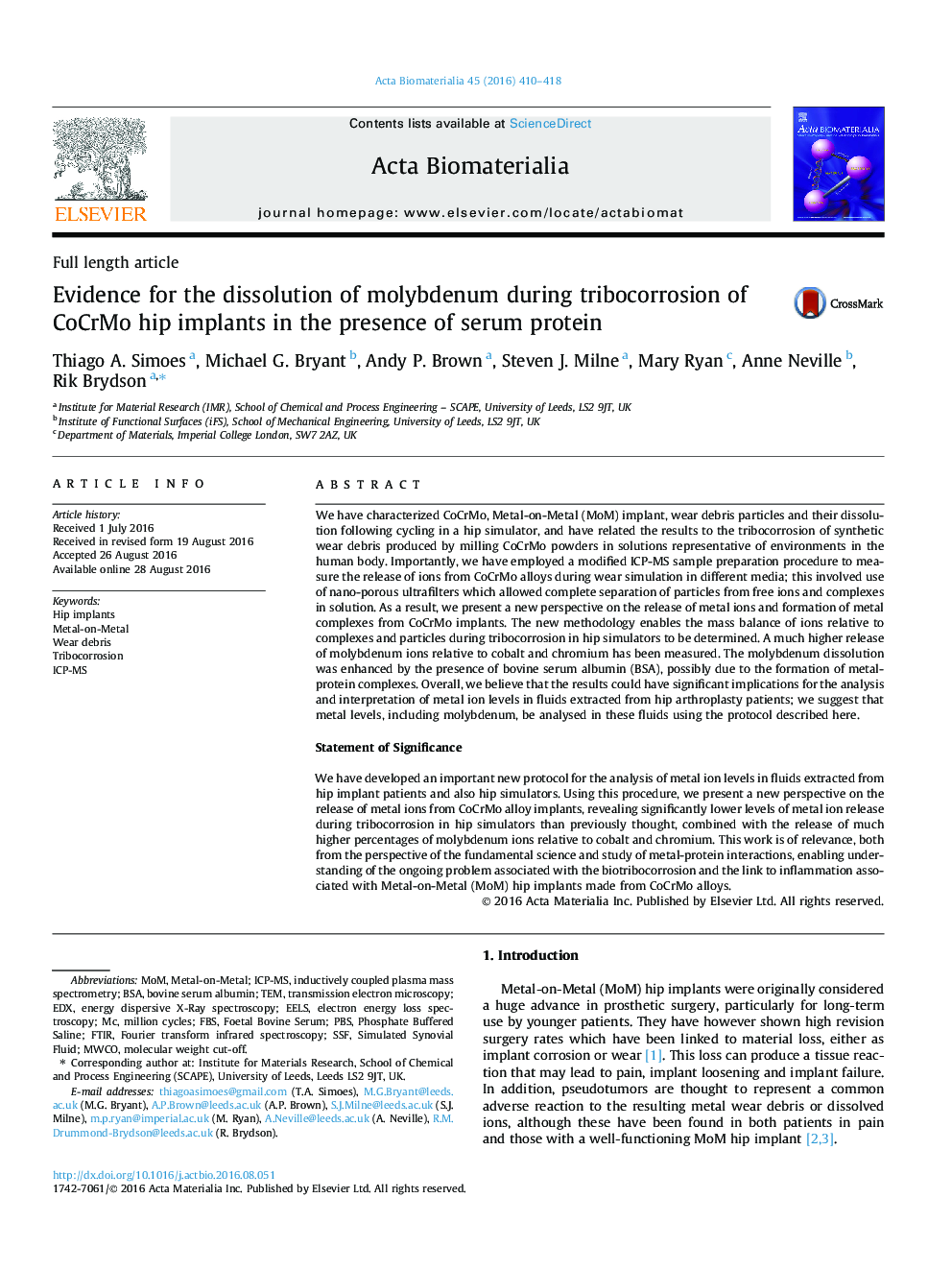| Article ID | Journal | Published Year | Pages | File Type |
|---|---|---|---|---|
| 6450338 | Acta Biomaterialia | 2016 | 9 Pages |
We have characterized CoCrMo, Metal-on-Metal (MoM) implant, wear debris particles and their dissolution following cycling in a hip simulator, and have related the results to the tribocorrosion of synthetic wear debris produced by milling CoCrMo powders in solutions representative of environments in the human body. Importantly, we have employed a modified ICP-MS sample preparation procedure to measure the release of ions from CoCrMo alloys during wear simulation in different media; this involved use of nano-porous ultrafilters which allowed complete separation of particles from free ions and complexes in solution. As a result, we present a new perspective on the release of metal ions and formation of metal complexes from CoCrMo implants. The new methodology enables the mass balance of ions relative to complexes and particles during tribocorrosion in hip simulators to be determined. A much higher release of molybdenum ions relative to cobalt and chromium has been measured. The molybdenum dissolution was enhanced by the presence of bovine serum albumin (BSA), possibly due to the formation of metal-protein complexes. Overall, we believe that the results could have significant implications for the analysis and interpretation of metal ion levels in fluids extracted from hip arthroplasty patients; we suggest that metal levels, including molybdenum, be analysed in these fluids using the protocol described here.Statement of SignificanceWe have developed an important new protocol for the analysis of metal ion levels in fluids extracted from hip implant patients and also hip simulators. Using this procedure, we present a new perspective on the release of metal ions from CoCrMo alloy implants, revealing significantly lower levels of metal ion release during tribocorrosion in hip simulators than previously thought, combined with the release of much higher percentages of molybdenum ions relative to cobalt and chromium. This work is of relevance, both from the perspective of the fundamental science and study of metal-protein interactions, enabling understanding of the ongoing problem associated with the biotribocorrosion and the link to inflammation associated with Metal-on-Metal (MoM) hip implants made from CoCrMo alloys.
Graphical abstractDownload high-res image (176KB)Download full-size image
